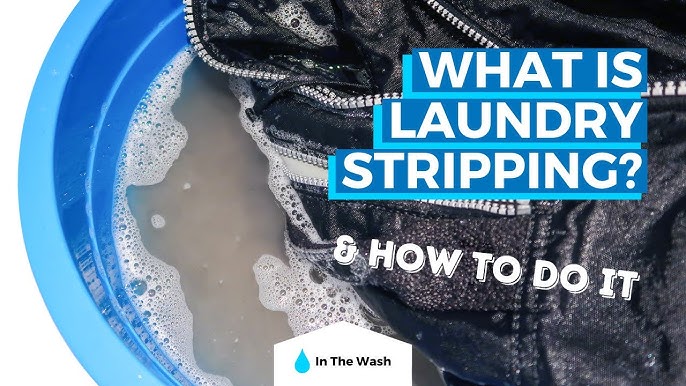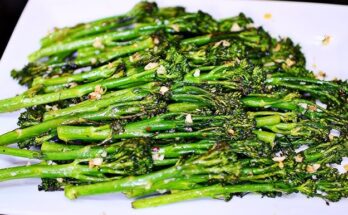Laundry Stripping Recipe: Laundry stripping might sound like some fancy detergent ritual, but it’s actually one of the most satisfying and deep-cleaning methods to rescue tired, dingy fabrics. If you’ve ever noticed your freshly “clean” towels smelling musty or feeling stiff, it might be time to give laundry stripping a go.
What is Laundry Stripping?
Definition and Purpose
Laundry stripping is a deep-cleaning process that removes residual buildup from laundry that regular washing can’t handle. Think of it as a detox for your clothes and linens. Over time, detergents, fabric softeners, body oils, minerals from hard water, and general grime all embed themselves into the fibers of your fabrics. Stripping lifts out all that gunk, leaving behind truly clean, soft, and fresh-smelling laundry.
Imagine your favorite white sheets slowly turning beige or gray—even though you wash them regularly. That’s buildup at work, and laundry stripping targets exactly that kind of deep-seated residue.
Why Traditional Washing Isn’t Enough
Your washing machine does a decent job on everyday dirt and stains, but it doesn’t always flush out all the detergent and minerals. In fact, especially with fabric softeners and hard water, your laundry could be accumulating layer after layer of grime. Over time, this can make clothes look older, feel rough, and even smell worse right out of the wash.
Traditional washing also doesn’t break down the chemical residues from common laundry products effectively. Laundry stripping, on the other hand, uses a specific mix of cleaning agents that break down and dissolve those compounds.
Benefits of Laundry Stripping
Restores Fabric Freshness
The biggest perk of laundry stripping? That “like new” feeling. After just one soak, towels fluff up, colors brighten, and fabrics feel soft and breathable again. It’s especially effective on older items that have seen their fair share of wear and washing. If your towels have lost absorbency or your gym clothes hold onto odor, this method can breathe new life into them.
Many people even say their clothes feel “lighter” after a strip—because the hidden gunk has finally been removed. It’s like pressing the reset button on your fabric.
Removes Built-Up Detergent and Minerals
Laundry stripping is the ultimate cleanup for fabrics plagued by hard water minerals or detergent overload. In places with mineral-heavy tap water, even the best washing machine can’t fully rinse away the residue. Stripping your laundry clears out all those minerals, brightening whites and restoring texture.
Fabric softeners and dryer sheets can also leave behind a waxy residue that coats fabrics. The stripping solution dissolves that film, which improves fabric performance—especially for towels and activewear. You’ll notice better absorption and less odor retention almost immediately.
When Should You Strip Your Laundry?
Common Signs You Need It
So how do you know when it’s time to strip? There are a few telltale signs:
- Your towels aren’t as absorbent as they used to be.
- Linens have a dull or grayish hue.
- Clothes smell musty even after washing.
- You live in an area with hard water.
- You frequently use fabric softener or dryer sheets.
- Activewear retains sweat odors.
If any of these sound familiar, your laundry is probably overdue for a good strip.
How Often to Do It
Laundry stripping isn’t something you want to do every week—it’s more like a seasonal deep-clean. Most people find that stripping every 3–6 months is plenty, depending on water quality, detergent usage, and fabric type.
Towels, sheets, and athletic gear are the best candidates. Everyday clothing usually doesn’t need it unless you notice specific signs of buildup. And always make sure to check care labels before starting the process, since some delicate fabrics can be damaged by the high-heat soak.
Supplies You’ll Need for Laundry Stripping
Ingredients
You don’t need anything fancy for laundry stripping. In fact, you probably already have most of the ingredients at home. Here’s the basic recipe:
- ¼ cup Borax – Great for removing hard water minerals and softening water.
- ¼ cup Washing Soda (sodium carbonate) – Helps break down detergent residue and boost cleaning.
- ½ cup Powdered Laundry Detergent – Use a strong, free-and-clear formula without additives.
Note: Don’t substitute with liquid detergent or pods—they won’t work the same way in this solution.
Tools and Equipment
You’ll also need a few household items to get started:
- A bathtub, large sink, or plastic bin – Big enough to hold your laundry and water.
- Tongs or a stirring stick – To agitate the clothes during soaking.
- Gloves – Optional, but helpful if you have sensitive skin.
- Hot water access – The hotter, the better (without scalding yourself).
Once you’ve got your supplies ready, you’re all set to start stripping!
Step-by-Step Laundry Stripping Recipe
Step 1 – Gather Your Supplies
Before you begin, lay everything out. Trust me—once that tub is full of hot water, you don’t want to be hunting for the Borax or detergent. Measure out your ingredients and ensure your laundry is ready (preferably clean, wet, and not overly soiled).
Step 2 – Fill the Tub with Hot Water
Fill your tub or bin with very hot water—not boiling, but hot enough to dissolve the ingredients and open fabric fibers. This helps release the grime that’s stuck deep inside. Make sure there’s enough water to fully submerge the laundry you’ll be soaking.
Step 3 – Add Ingredients
Pour in your measured amounts:
- ¼ cup Borax
- ¼ cup Washing Soda
- ½ cup Powdered Laundry Detergent
Stir the mixture well to ensure everything dissolves completely. It should look slightly cloudy—don’t worry, that’s a good sign.
Step 4 – Soak the Laundry
Add your laundry and make sure it’s fully submerged. Let it soak for 4–6 hours, occasionally stirring with a stick or your hands (wear gloves!). You’ll start to see the water turn murky, brown, or even gray—gross but oddly satisfying.
That discoloration? It’s years of buildup being stripped out.
Step 5 – Rinse and Wash
Once the soaking time is up and you’ve stirred everything well, it’s time to drain the tub—and prepare to be amazed (or horrified) by the color of the water. That murky mess is all the grime, body oils, detergent residue, and minerals that have been lurking in your laundry.
Now, take each item out and rinse it thoroughly. Squeeze out the excess water and toss it directly into your washing machine. Run a rinse-only or a light wash cycle with no detergent. This extra step ensures any remaining stripping solution is washed away.
Once done, dry as usual—preferably in the sun, if you can. Sunlight naturally deodorizes and brightens fabrics even more.
Precautions and Tips for Best Results
Laundry stripping is a powerful cleaning method, but it’s not for every fabric or situation. Here’s how to get the most out of it:
- Don’t overdo it: Over-stripping can wear out fabrics, especially delicate ones. Only strip when necessary.
- Stick to tough fabrics: Ideal for towels, sheets, socks, and athletic gear. Avoid using on silk, wool, or anything labeled “dry clean only.”
- Do a test first: If you’re unsure about how a fabric will react, test it with a small strip before doing an entire load.
- Skip the fancy stuff: Fabric softeners, scents, and dyes can get in the way. Use basic, unscented detergent.
And always remember: the goal of laundry stripping is to reset—not to replace—your regular laundry habits. Keeping up with proper washing techniques after stripping will help fabrics stay fresher for longer.
FAQs about Laundry Stripping Recipe
Q1: What is laundry stripping?
Laundry stripping is a deep-cleaning technique that removes built-up detergent, fabric softener, body oils, and minerals from clothes and linens. It goes way beyond your usual wash cycle and leaves fabrics feeling and smelling brand new.
Q2: Is laundry stripping safe for all fabrics?
Not quite. While it’s excellent for towels, bed sheets, and workout clothes, it can be too harsh for delicate fabrics like silk, wool, or anything labeled “dry clean only.”
Q3: How often should I strip my laundry?
Once every few months is enough for most households. If your towels feel stiff, smell funky, or your whites are looking gray, it might be time for a strip session.
Q4: Can I strip laundry in a front-load washing machine?
Unfortunately, no. Stripping requires soaking in a large tub or bucket for several hours. Front-loaders just don’t give you that soaking space.
Q5: What’s the best stripping solution to use?
The classic combo is:
- ¼ cup Borax
- ¼ cup Washing Soda
- ½ cup Laundry Detergent
Mixed in a tub of hot water. Stir it up, toss in the laundry, and let it soak for 4–6 hours.
Q6: Will stripping fade my clothes?
It shouldn’t, as long as you’re only stripping items that can handle strong cleaners and hot water. Always check care labels before diving in.
Q7: Can I use laundry pods or liquid detergent?
Stick with powdered detergent for best results. Pods and liquids can leave behind more residue—which is the whole problem laundry stripping solves.
Q8: What should I do after stripping laundry?
After soaking, rinse or run the items through a normal wash cycle without detergent. This removes any leftover grime and chemicals.
Q9: Is laundry stripping eco-friendly?
It depends. While it reduces the need for frequent replacements of linens, the process uses a lot of water and chemicals. So, use it sparingly and only when necessary.
Q10: Can I strip colored clothes too?
Yes, but test them first. Some dyes may bleed or fade. Stick to colorfast items you’ve washed multiple times already.
Conclusion
Laundry stripping is like spring cleaning for your clothes. It’s satisfying, surprisingly simple, and incredibly effective at reviving fabrics that seem past their prime. Whether your towels have lost their fluff, your workout gear still smells off, or your sheets have seen better days, stripping them just once can make a world of difference.
By using the right ingredients and following the process step-by-step, you’ll get that deep-clean freshness that regular washing can’t provide. So, set aside an afternoon, prep your ingredients, and get ready for cleaner-than-clean laundry.



